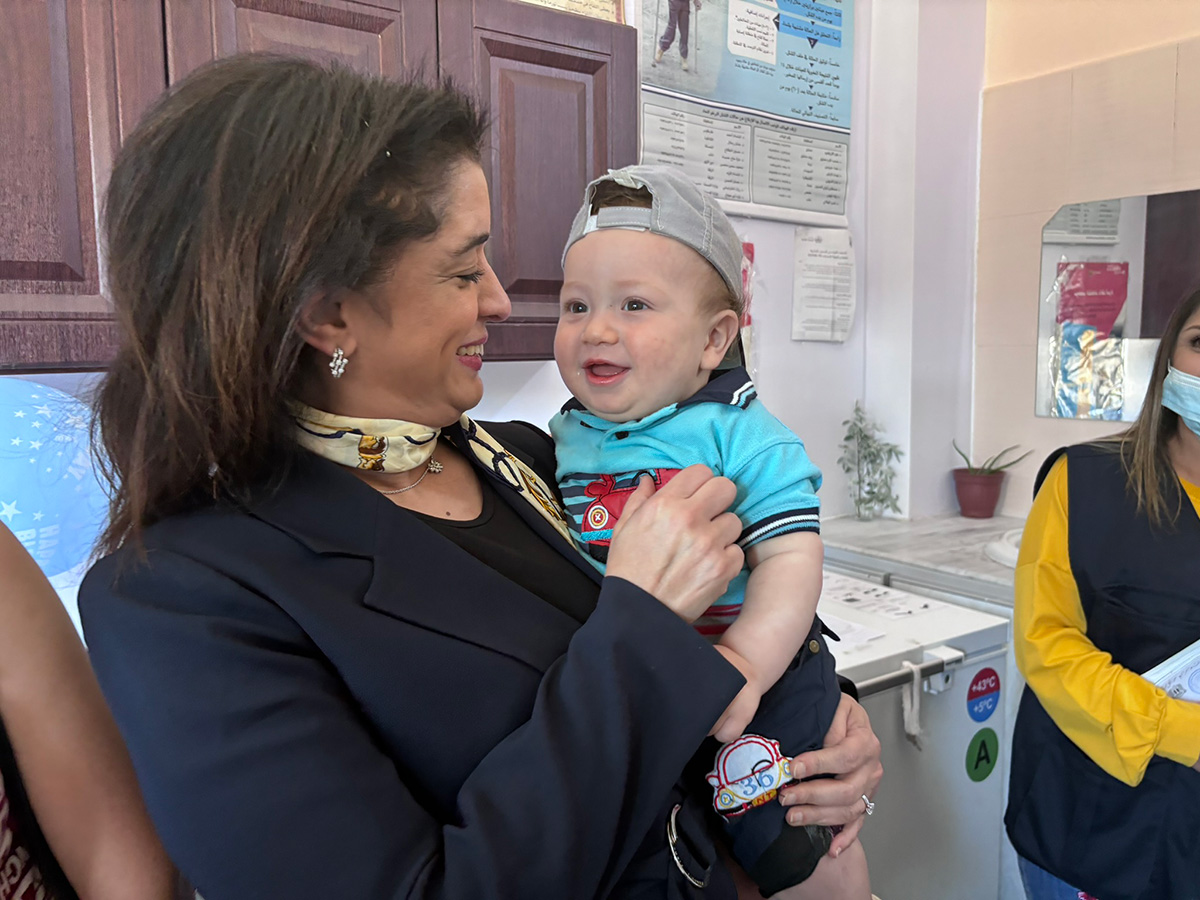
18 May 2024 – I recently returned from Syria, where my goal was to gain a better understanding of the situation, the needs, and the challenges facing our humanitarian work on the ground. I met with senior Syrian officials, key donors, and partners in Damascus. I also visited Homs, Hama, and Aleppo governorates to meet with local health authorities, speak with health workers and patients, and see firsthand how and to what extent health is impacted in the country.
Having gained a deeper understanding of the complexities and challenges facing the people of Syria and our humanitarian operations, I am greatly concerned. The number of people in need is staggering, and pockets of critical vulnerabilities persist in many parts of the country. Compounding this already catastrophic situation, increasing political tensions in the region risk further escalation in Syria.
Health in Syria is affected by more than just a lack of resources. The country’s socioeconomic situation is rapidly worsening due to ongoing insecurity, climate change, environmental risks, displacement, poverty, and food insecurity. While these factors fall beyond the scope of the health sector, they contribute to health vulnerabilities across the country. In discussions with senior Syrian officials, I emphasized the importance of enhanced multi-sectoral coordination at all levels to address these complex challenges.
Chronic diseases account for almost 75% of all deaths across the country. In Homs, I spoke to a patient in his 40s and already undergoing kidney dialysis. He shared that he suffered from diabetes but could not afford his medications, and there were no specialized doctors available for regular follow-ups. Like many patients, he was unaware of the serious consequences of leaving this and other diseases untreated. He expressed hope that other diabetic patients would not face the same suffering he was experiencing.
I am also extremely alarmed by rising ates of malnutrition among children under five and mothers, a severe outcome of the rising poverty across the country. Rates of global acute malnutrition (GAM) in children under five have tripled over the past 4 years, and the number of stunted children in five out of 14 governorates has increased, with some areas experiencing catastrophic levels.
Syria remains one of the biggest displacement crises in the world, with more than 7.2 million people internally displaced. As a result of the prolonged conflict and the tragic earthquake in February 2023, the people of Aleppo are enduring very challenging living conditions. Lack of electricity has led to innovative yet unsafe approaches to heating and cooking, increasing the risk of fires and household burns, particularly for children.
Across the country, overcrowded living conditions and limited access to clean water and proper sanitation, outbreaks of cholera, severe acute respiratory infections, measles, lice, and scabies have been regularly reported across the country over the past two years.
Against this grim backdrop, Syria’s health system remains extremely fragile. Only 65% of hospitals and 62% of primary health care centers are fully operational, and there are severe shortages of essential medicines and medical equipment. Most concerning is the fact that almost half of the health workforce, which forms the backbone of any health system, has left the country. Retaining a skilled health workforce and ensuring sufficient medical supplies in Syria and across the Region is a key priority.
Despite the solid work I have seen done by WHO and partners to restore and rehabilitate health services, access to health care remains limited. I am extremely concerned about the situation in Al-Hol camp. Since May 9, the camp administration has revoked WHO’s access after funding shortages forced WHO to halt medical referrals. WHO serves as one of the main health providers in the camp, where health needs and public health risks are immense. Our unrestricted access to the people in the camp must be restored in alignment with humanitarian principles to ensure we fulfill our public health mandate. Our work in the camp also involves coordinating the health sector, supporting routine immunization, and conducting disease surveillance and response activities, to name a few.
Throughout my five-day visit, the decline in humanitarian funding for Syria was a central and troubling concern. Speaking with key donors in Damascus, it was clear that they were fully aware of the scale of gaps and needs. However, it was also evident that they are constrained by competing regional and global priorities.
As humanitarian agencies, we often find ourselves forced to prioritize even our most critical, life-saving activities, sometimes making tough decisions to significantly scale back operations — such as emergency hospital referrals from camps hosting displaced people in northeast Syria — due to insufficient resources. In this challenging landscape of limited funding, a comprehensive review of our current humanitarian response operations, informed by the multi-sectoral humanitarian needs assessment, will enable us to better identify the most critical needs and allocate resources accordingly.
In my meetings with Syrian officials, I emphasized the urgency of obtaining updated health data to inform prioritized response planning and ensure that limited resources are used effectively to address the most pressing humanitarian needs. I also highlighted to humanitarian partners the importance of building on their strong collaboration within the UN Country Team in Syria (UNCT) to prioritize efforts and maximize the impact of our collective work.
Despite more than a decade of war and the compounding, multi-layered stresses facing the Syrian people, their resilience and determination are remarkable. WHO remains committed to supporting them. Failure to invest in the health of the population will only deepen instability in the country and pose threats to regional and global security. This cannot be allowed to happen. Following my visit, I am now more determined than ever to advocate for greater international support and strengthen WHO’s technical expertise to tackle these complex challenges. Too many lives are at stake, and the cost of inaction is simply too high.













